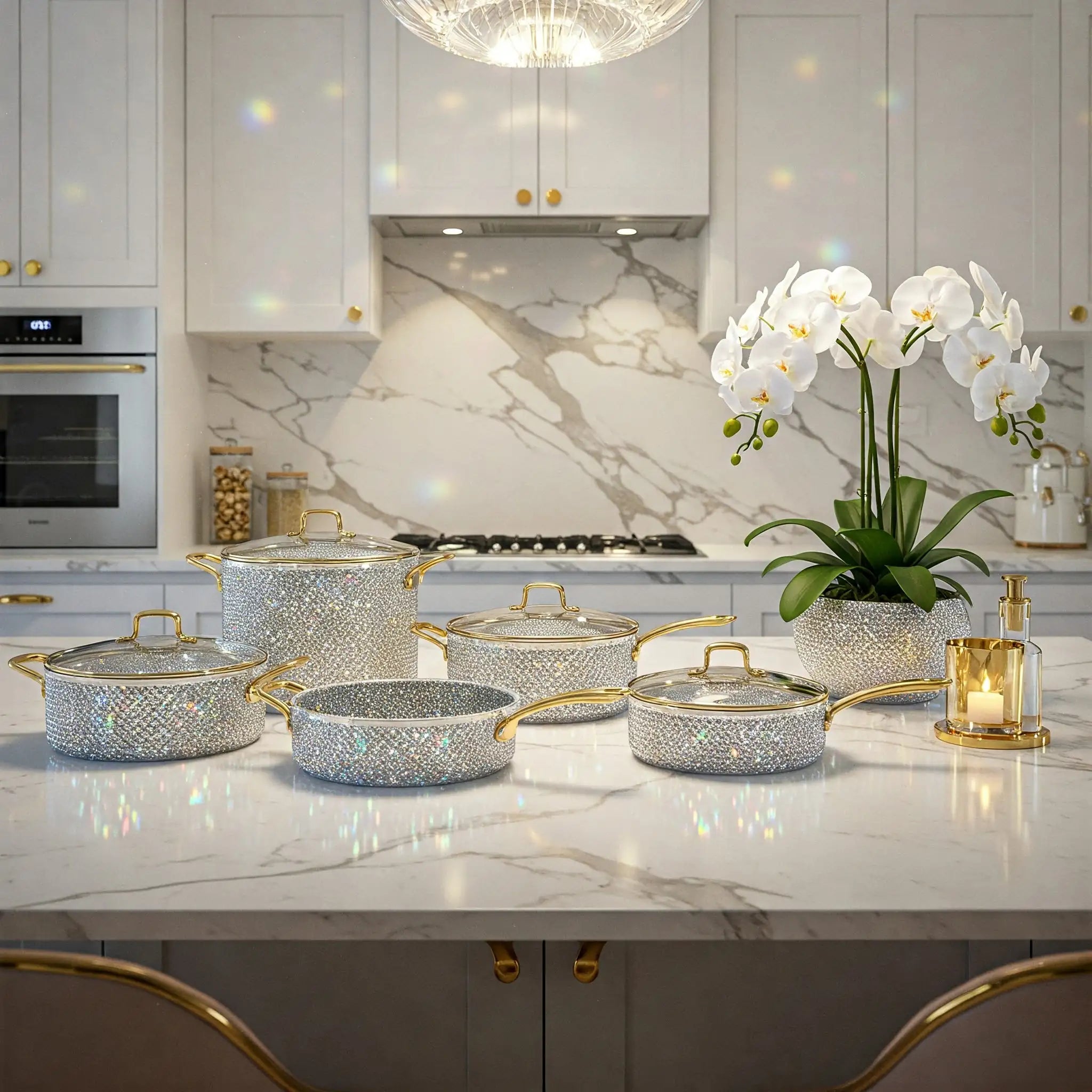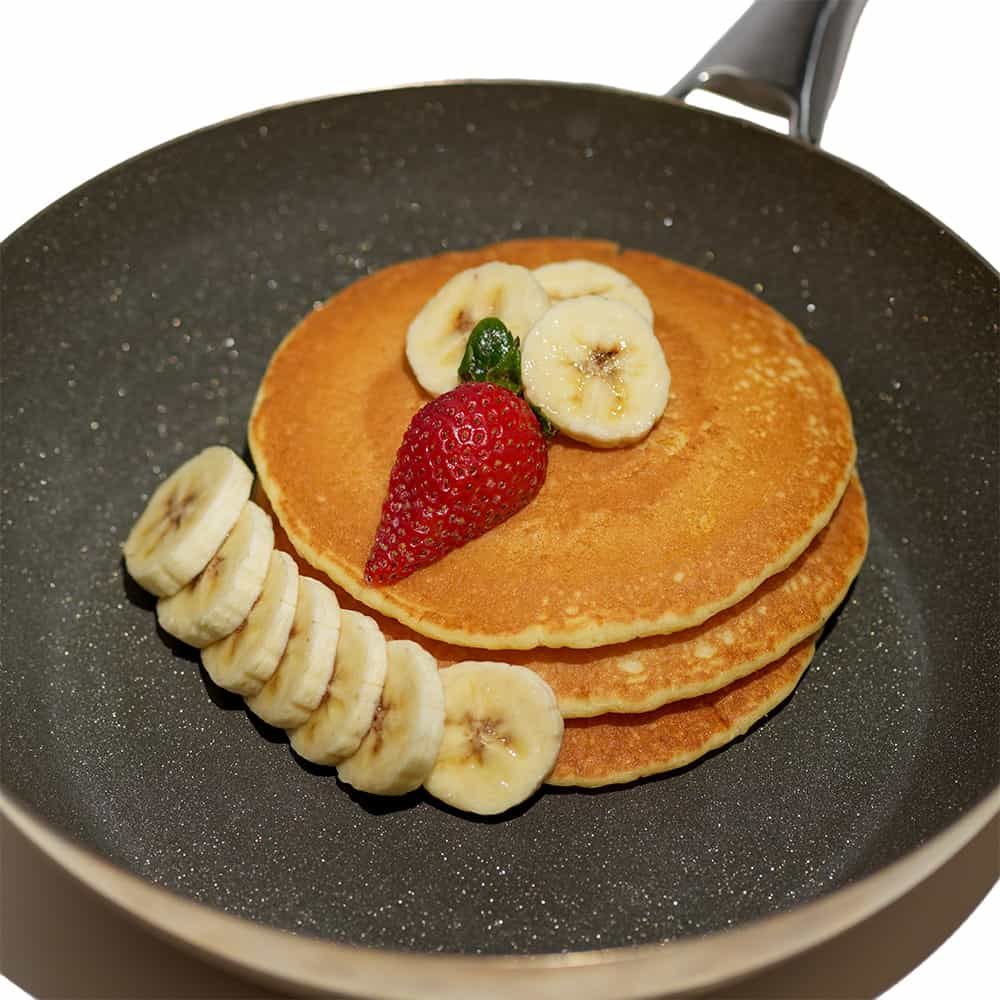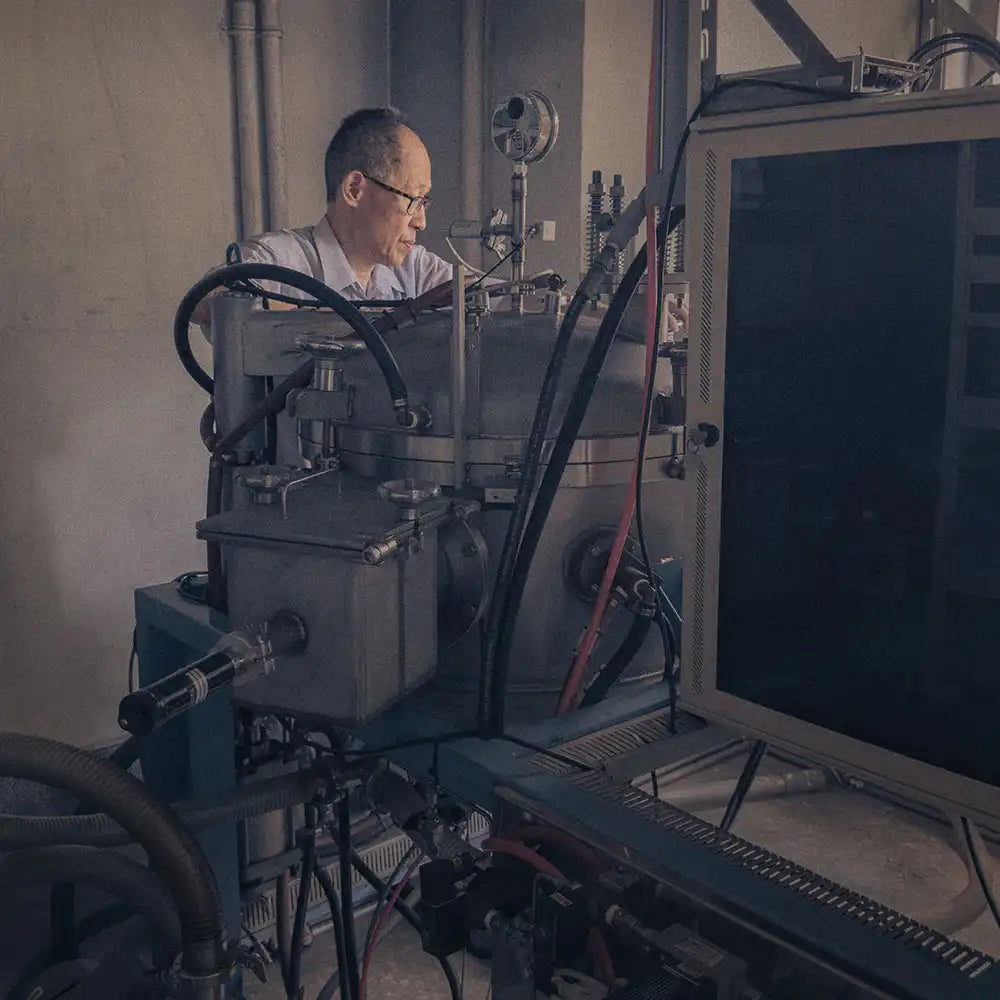
What’s the Safest Cookware? Unveiling Diamond-Infused vs. Teflon

Cookware safety is an essential topic for health-conscious home cooks: from concerns about Teflon’s potential chemical risks to the rise of diamond-infused pans touted as “the safest choice.” In this article, we’ll examine diamond-infused cookware and vacuum-brazed diamond cookware—alongside popular types like Teflon, stainless steel, cast iron, and copper. By the end, you’ll have a clearer sense of which cookware might be best for your kitchen and your health.
Quick Takeaway
- Safety First: Diamond-infused and vacuum-brazed diamond cookware are PFAS-free, making them safer alternatives to traditional nonstick pans like Teflon, which can release harmful chemicals when overheated.
-
Durability Matters: Diamond cookware is highly scratch-resistant and less likely to flake or degrade over time compared to Teflon, ensuring a longer lifespan even with regular use.
- Traditional Options Have Benefits: Stainless steel, cast iron, and copper each provide unique advantages—such as durability, heat retention, and precise temperature control—but may require more maintenance and lack nonstick surfaces.
1. Understanding Popular Cookware Materials
1.1 Teflon (PTFE)
Teflon refers to the PTFE (polytetrafluoroethylene) coating used on nonstick pans [14]. PTFE is a type of PFAS, which are known as “forever chemicals” because they don’t break down easily and have been linked to numerous health issues and environmental risks.
1.2 Stainless Steel
Stainless steel is a go-to choice for durability and versatility [2]. Because it’s a relatively poor conductor of heat on its own, many stainless steel pans include a copper or aluminum core to improve heat distribution [3]. Stainless steel is generally safe, but it’s not inherently nonstick, so you might use more oil compared to Teflon or ceramic.
1.3 Cast Iron
Cast iron cookware has a loyal following due to its excellent heat retention and longevity [5]. When properly seasoned, it develops a semi-nonstick surface, and many enthusiasts tout added iron intake as a health perk (though others note that this may not always be beneficial) [11][12]. Cast iron is heavy, requires periodic seasoning, and can rust if not dried thoroughly [4].
1.4 Copper
Copper stands out for its superb heat conductivity, heating quickly and evenly for precise temperature control [13]. It often comes lined with stainless steel or tin to avoid direct contact with acidic foods. However, copper can be pricier and demands careful cleaning to maintain its shine.
2. Diamond Cookware: A Rising Star
2.1 What Is Diamond-Infused Cookware?
Most “diamond-infused” pans are built around an aluminum base coated with a ceramic matrix that includes tiny diamond particles [7]. This type of cookware is frequently advertised as PFAS-free, meaning it omits substances like PFOA and PFOS commonly associated with older Teflon coatings [8]. Since diamond is one of the hardest known materials, these pans aim to deliver:
- Greater scratch resistance than standard ceramic nonstick
- Faster, more even heating, thanks to diamond’s high thermal conductivity [6]
2.2 Vacuum Brazed Diamond Cookware (Premium Option)
A better version of diamond cookware—often called vacuum brazed diamond cookware—uses actual diamond crystals bonded directly to the metal surface in a vacuum environment, sometimes with a specialized titanium alloy [6]. Unlike ceramic-infused coatings that can flake off, these diamond crystals are permanently fused, resulting in:
- Exceptionally durable surfaces less prone to chipping or peeling
- Even better heat distribution for consistent cooking temperatures [9]
- PFAS-free cooking without relying on PTFE-based layers
3. Comparing Diamond-Infused to Teflon
| Feature | Diamond-Infused Ceramic | Teflon (PTFE) |
|---|---|---|
| Nonstick Quality | Excellent release; PFAS-free formulations [7] | Very slick surface; older versions may contain PFAS [8] |
| Durability | More scratch-resistant than basic ceramic [1] | Susceptible to scratching under metal utensils [16] |
| Heat Conductivity | Improved by diamond; heats quickly and evenly [6] | Decent with aluminum base, but less robust than diamond |
| High-Heat Tolerance | Varies by brand, but usually safe up to ~500°F | Prolonged exposure above ~500°F can degrade PTFE [15] |
| Price Range | Mid to high | Generally affordable, but premium Teflon lines exist |
1. Nonstick & Safety: Diamond-infused pans usually rely on ceramic-based coatings, avoiding PFAS [9]. Due to PFAS-related health and environmental risks, Teflon (PTFE) cookware is deemed unsafe by many experts and was banned in Minnesota on January 1, 2025 [18,19].
2. Durability: Vacuum brazed diamond pans can withstand metal utensils and harsh scrubbing better than many Teflon pans, which are more prone to scratching and flaking over time [16].
3. Heat Conductivity: Diamond’s thermal conductivity is significantly higher than PTFE, offering better heat distribution and fewer “hot spots.” [6]
4. Is Diamond-Infused Cookware Really “The Safest”?
The term “safest” can be subjective, but certain principles guide these claims:
- PFAS-Free: Diamond cookware generally avoids the chemical families linked with older nonstick pans [8].
- High Scratch Resistance: Less risk of coating flaking into your food when properly used [1].
That said, “diamond-infused” labeling can sometimes be marketing hype if the diamond content is negligible or if a brand lacks transparency. Check for reputable manufacturers or stated “carat weight” claims that specify how many diamonds are in each pan [10].
5. Final Considerations
When it comes to cookware safety and performance, your choice may depend on budget, cooking style, and longevity needs:
- If You Demand High Durability and PFAS-Free Cooking: Diamond-infused ceramic or vacuum brazed diamond cookware might justify the extra investment for everyday or professional-level cooking [9][10].
- If Traditional Materials Appeal to You: Stainless steel, cast iron, and copper each have unique strengths, from durability to precision heating, though they may not offer the same nonstick ease as Teflon or diamond coatings [3][4][5][13].
In the end, “the safest cookware” boils down to minimizing unwanted chemicals, choosing surfaces that resist degradation over time, and following the recommended care instructions for whichever material you select [7][17].
References
- National Institutes of Health: PFAS
- Our Current Understanding of the Human Health and Environmental Risks of PFAS - EPA
- How PFAS Impacts Your Health - CDC
- Best Diamond Coated Cookware? What You NEED to Know Before You Buy - DiamondPans
- Pros and Cons of Stainless Steel Cookware - LeafScore
- Is Stainless Steel Cookware Safe? A Comprehensive Guide - Sur La Table
- How to Make Your Cast Iron Last Forever - What's for Dinner?
- Cast Iron is a Better Heat Conductor Than Stainless Steel - Reddit
- Best Diamond Cookware for Home Cooks in the USA: Top Brands & Benefits - DiamondPans
- Diamond Cookware: The Comprehensive Nonstick Guide for American Home Cooks - DiamondPans
- What are PFAS and Why Should People Choose PFAS-Free Cookware? - DiamondPans
- Diamond Cookware: A Safe and PFAS-Free Nonstick Option - DiamondPans
- How to Choose Diamond Cookware: Carat Weight Matters Most - DiamondPans
- Cast Iron Cookware - My Health Forward
- Are Cast Iron Pans Unsafe? - Examine.com
- How to Clean Copper Cookware So It Always Gleams - Martha Stewart
- Teflon Heat Distribution? - Reddit
- Is Nonstick Cookware Like Teflon Safe to Use? - Healthline
- How to Clean Nonstick Pans So They Last for Years - Better Homes & Gardens
- You Can't Always Trust 'Non-Toxic' Claims on Cookware, Tests Show - KSAT
- 2025 PFAS Prohibitions - Minnesota Pollution Control Agency



